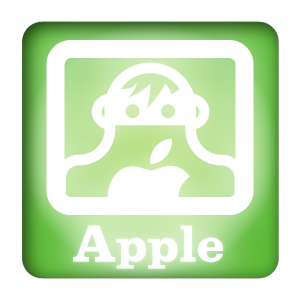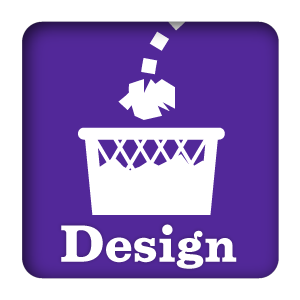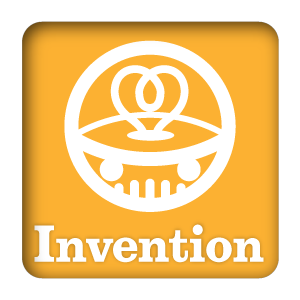At an event at Apple’s Town Hall on Oct. 27th, Apple introduced a new line of updated MacBooks pros and a TV app available in December.
And?
So to recap, three revised MacBook Pro models, and an app available in a couple of months.
Apple also introduced an update to Final Cut Pro X.
I See. Whelp, I’m going to get some lunch. You take it from here.
First up was the new “TV” iOS app, for the Apple TV but not exclusive to the Apple TV, that will help you find shows across all installed video apps. It does this based on your history, and by using verbal Siri requests to find recorded shows.
It folds in the functions of the movie and TV stores, along with the contents of your video library and adds a new Apple Music-like function called “Watch Now” that will keep track of shows you are watching and suggest new shows based on your history and from curated lists. If you do not have the correct app, Apple TV will suggest it as a download.
The impression I got was that Apple still isn’t quite sure what the app is for, in terms of functionality. The argument for using the “TV” app seems to be simply that Apple will require you to use it, as they also mentioned that it would replace the “Videos” app on the iPhone and iPad. The duplication of the TV, app and movie stores only really makes sense on iPhone and iPad devices, so I also think that this app was more about bringing Apple TV functions to iOS devices, more than the Apple TV itself.
I also think that this is the portal through which Apple intends to release it’s own content. If, indeed, Apple is getting into the content business, it makes more sense to put them here than it does within the confines of Apple Music or iTunes. The delay in the app’s release until December may be more indicative of when the Apple content will become available than any software development issues. It does not work with Netflix, nor with Amazon Instant Video, two of the most popular streaming services, and they could also be using the time to negotiate something.
In addition, an update to the Apple TV tvOS will add the ability to request live sports across the apps you have installed. The already-announced single sign-on feature remains as a feature that is “coming soon.”
Apple’s key message was calling it a “unified TV experience” and that there was now “no reason to watch TV anywhere else.”
I often wonder if anyone at Apple has ever actually watched TV. They seem to approach the whole medium like alien anthropologists who are trying to reconstruct what TV was using incomplete 10,000 year old information. “We have observed your Earth transmissions and offer our advanced technology to view these time-wasting diversions,” is the pitch Apple tends to give us. I’m amused that they’ve hired a small city’s worth of car people to work on the car project, but only a couple of TV executives to work on the TV project.
Of course, I’m not sure I’d want an Apple TV designed by TV executives. It’d probably result in something as unappealing as Apple Music.
Next up was the Mac. In his introductory remarks, Tim Cook referred to the Mac as “something dear to all of us at Apple,” which completely eased the minds of all Mac users everywhere.
The MacBook Pro received it’s first significant update since late 2012. The new MacBook Pro comes in 13 and 15 inch models with brighter displays, faster graphics and a thinner case. The new models are one half-pound lighter, as well as being smaller in every dimension. Aside from the headphone jack, Apple has removed all ports, including the MagSafe power port, and replaced them with four new ports. These new ports are functionally both USB-C and Lightning 3 ports, and can also work as power adapter ports. Apple is also adding the Touch ID feature to the Mac for the first time.
The headline feature of the new MacBook is the Touch Bar, a second miniature touch sensitive display that appears as a strip above the keyboard, replacing the function keys as well as the escape key and eject key. Also gone are the brightness controls, illuminated keyboard controls, desktop controls, and audio controls. Apple demonstrated that these functions will now be available as user-configurable keys in the Touch Bar.
Applications will also have access to the Touch Bar area, to put in controls of their own. When an application uses the bar, the standard controls are reduced and put to the side, much like the Control Strip feature from System 7. All Touch Bar controls also have an “x” button to dismiss the bar. That function was not demonstrated at the event, so its unknown for now how a user might mute or pause audio and video while another app has control of the Touch Bar.
Like most Apple product upgrades, there are trade-offs to enjoy the new features. However, no product in recent memory from Apple has introduced more trade-offs than this one. The RAM has a limit of 16GB, which will be okay for 95% of Apple’s customers, but many will have issue with limited RAM in a “Pro” machine. Creative professionals commonly max out the RAM on their computers, and now they’ll have no expansion or upgrade in a brand-new computer, an unprecedented development. The SSD drive is soldered to the motherboard, and cannot be expanded or upgraded, nor can it be resurrected if something should go wrong with the computer.
With only support for USB-C plugs, any devices that use USB, USB 3, Thunderbolt, Thunderbolt 2, or HDMI, now need an adapter. For most people that’s practically all their devices – including the one-month old iPhone 7. Flash memory cards will need a reader, and MagSafe power adapters are eliminated.
What one gains from losing all these ports and options is a computer that gets 1 extra hour of battery life and a standard GPU that’s far below industry standards. So for a computer that’s not much faster, that’s traded all ports for four new ports that haven’t been adopted by the industry, has traded 14 keyboard keys for soft keys, added Touch ID, and lost a half pound in weight, the new MacBook Pros come with a price increase of $400-$500 over similarly-spec’d 2012 MacBook Pros. The new non-touch 13-inch runs a CPU that has a significantly slower clock speed than the “old” 13-inch for $200 more.
The new MacBook Pro line is less of a advancement of the device than it is a repositioning of the device. It appears that Apple, after re-flagging their “iPad” as the “iPad Pro” and after the introduction of these new MacBook Pros despite the lack of Pro features, is adjusting the definition of “Pro” in a way that uses the term more for branding purposes than as an indicator of it being suitable for professionals. The device bears far more in common with the MacBook Air than it does with the previous generations of the Pro, and it is not competitive in price or specs with the high-end or mid-range laptops from other manufacturers.
The market for this computer are people who desperately want to upgrade from their 4-year-old MacBook Pros, and those who are interested in the Touch Bar and Touch ID features.
Apple did make the compelling case that the new MacBook Pro is markedly better than the 25-year-old Macintosh PowerBook 170, proving itself better in many different ways. We have maintained a “do not buy” recommendation for the PowerBook 170 for 23 years.
The MacBook Pro update also reshuffled the Mac portable line significantly. Previously, the low-end of the line, the 11-inch MacBook air began at $899 but the new low-end is the 13-inch MacBook Air at $999, and Apple essentially said they intend to replace this model with the 2016 13-inch MacBook Pro at $1499. So in one day, the MacBook line just got a little more expensive in a market where laptops are getting cheaper and cheaper.
This creates a clear gap in the laptop pricing scheme between the Macs and the iPad Pro. Apple has essentially cleared out the 11-inch MacBook Air to make the 12-inch iPad with keyboard the successor in that pricing category. When one looks at the laptop line from Apple, it now starts with the 9-inch iPad Pro with keyboard and extends through the 12-inch iPad, the 13-inch MacBook Air, the MacBook and then the new 13-inch & 15-inch MacBook Pros. Apple is now actively driving the low-end Mac portable customer to the iPad.
That brings us back to this piece of depressing blackness, the question that’s been on everyone’s mind for a couple of years now, and suddenly becomes even more relevant: When will Apple kill the Mac?
Do you want these chips? I wasn’t going to… Oh, you got serious here. I’m just gonna go walk around the block.
Apple’s revenue pie chart shows that the Mac is a measly 12% of revenue for Apple, it’s third-biggest segment behind the 13% of ‘Services’ and 61% of the iPhone. As we’ve already seen, Apple now wants the low-end laptop business to go to the iPad, intentionally cannibalizing Mac revenue, and passing potential Mac customers to another platform.
However, in terms of actual money, the Mac is generating a very consistent number, around 6 billion in revenue per quarter, and has been doing so for over four years. It’s just that Macs aren’t growing anymore, and that as Apple grows, that $6B means less and less to Apple as a whole.
As much as it makes sense to keep the Mac vital, Apple has shown a flat-out intolerance for any technology that is not a service or a touch device. Even then, the iPhone seems to take up almost all of their resources.
One can also interpret the Touch Bar MacBook Pro as an honest attempt to juice up the Mac and make it more friendly to touch-screen customers, but one can also see the new features as using repurposed tech. With the Touch Bar and Touch ID running off the guts of the T1 chip, the heart of the Apple Watch, the Touch Bar is a way to use the technology of the commercially underwhelming Watch to greater effect.
Clairvoyance is the only way to know if this will be enough. Apple is upgrading the Mac so infrequently that one can easily see a few more bad quarters resulting in a down-sizing of the Apple product line, and the first casualty could be the Mac.
My instinct is that while Apple does not want to kill the Mac outright, they do want it to be a low-maintenance project, and would like to convert as many Mac users to iPhone and iPad users as possible. The problem is that there are plenty of users in the Apple ecosystem who use both. They use both because there is no solution on an iPad or an iPhone for certain tasks, and there won’t be solutions for years, if not decades to come. Forcing users to use the iPad or iPhone and abandon the Mac does not change reality.
Here are some tasks that simply can’t function on a tablet, or function badly: Researching, presentation creation, advanced gaming, movie production, animation, audio editing, graphic design, programming, long-form writing, text editing, photo editing, engineering, architecture, music sequencing, computer IT administration, accounting, data entry and 3D CAD applications.
Now, all of these tasks can be accomplished to some degree on a tablet, but the desktop and laptop provides a markedly better and far more efficient way of doing this kind of work. Also, most tasks that involve sustained work of more than 20 minutes becomes uncomfortable with a tablet. Trying to force users and developers to endure an inferior experience on a tablet or phone is not going to win you customers. A touchscreen environment has some advantages, and some disadvantages. Simply put.
Apple wants the world to be on touchscreen computers, and they are hell bent on making it reality. There is a fine line between making something for the benefit of your customers and making the computer you prefer to make by ignoring your customers. You can ignore your customers when they complain about having to give up the past to embrace the future, but Apple appears to be ignoring their customers when they have a reasonable point to make. To the customer, Apple is tilting at windmills only they see.
Apple used to be great at pushing us, whining, crabby, fussy customers into the future by telling us a story about why we had to do it. They no longer tell us those stories. They just throw apparently random changes at us that somehow always require us to spend money for a questionable future benefit.
The reasonable thing to do would be to vote with your pocketbook and not buy the new MacBook Pro. But Mac users who desperately need an upgrade will have to do it. They have no choice if they want to run new software. So Apple’s lock-in with their technology effectively quiets the noise the company should be hearing. If we all complain about the irrational changes made to the MacBook, iPhone and Apple TV lines, but still buy them, why would Apple interpret these complaints as anything but sour grapes that we’ll get over?
It’s a curious thing you see with large companies that suddenly have no idea why customers buy their products. You expect it from a company like General Motors, McDonalds or Comcast. They get so hung up on meeting their own needs that they lose any ability to comprehend their customer’s needs and what they will need down the line. General Motors should have produced a feasible electric car with amazing technology a decade ago, but they didn’t see it, and made 500 varieties of SUVs and are being challenged by Tesla. McDonalds could have understood that their customers wanted better, healthier food and made a decision to go all in, but instead they have 45 different hamburgers on their menu are are challenged by dozens of healthy competitors. Comcast could have understood that investing billions and billions into expensive content wasn’t going to be of any value in a few years when video can go straight to YouTube and be shot for zero cost.
None of these companies will die off, though. They are all powerful enough to keep making money, their customers unable to find an alternative, and loyal to a fault.
When a company is so focused on meeting their own internal needs, whether that be profit, contractual obligations, political maneuvering, internal power struggles, or executive self-esteem, they quickly forget the basics. They forget how to make a product.










